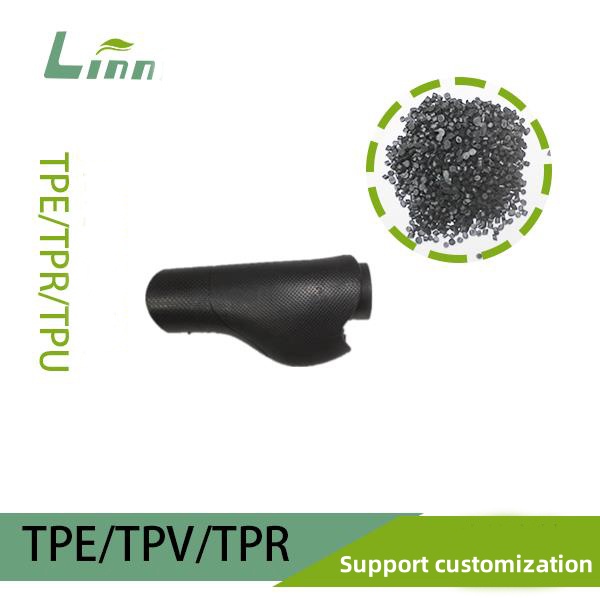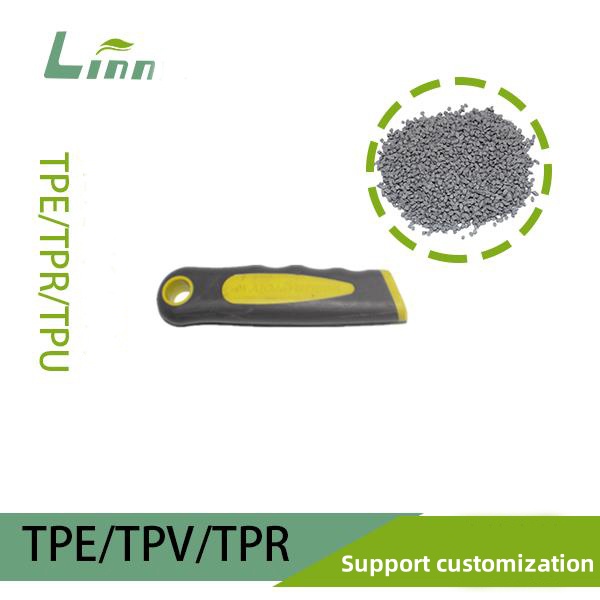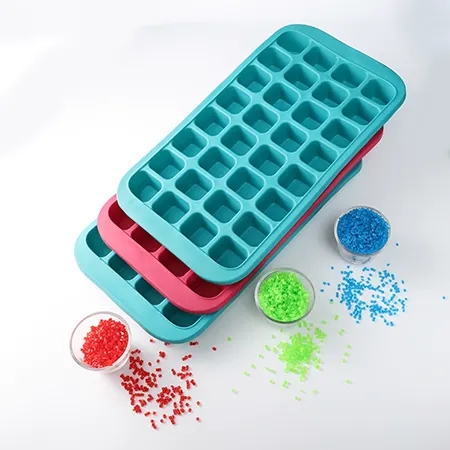Having spent years in the tool manufacturing industry, I understand how critical the handle material is for a screwdriver’s performance. The handle isn’t just a grip; it directly impacts comfort, durability, and safety during use. In recent years, TPR (Thermoplastic Rubber) has gained popularity as a material for screwdriver handles. So, is TPR plastic a good choice for screwdriver handles? In this article, I’ll dive deep into TPR’s properties, real-world applications, pros and cons, and how it stacks up against other materials to help you make an informed decision.
What Is TPR Plastic, and Is It Suitable for Screwdriver Handles?
TPR, or Thermoplastic Rubber, is a polymer that combines the elasticity of rubber with the processability of plastic. It’s soft to the touch, resembling rubber, but offers greater flexibility in manufacturing compared to traditional rubber. TPR is commonly used in products requiring a comfortable grip, such as tool handles, sports equipment, and medical devices.
In the context of screwdriver handles, TPR has become a “trendy” choice. Its soft texture and non-slip properties make it instantly appealing to users who prioritize comfort. But is a pleasant grip enough to deem it suitable for screwdrivers? Let’s evaluate its performance in practical scenarios.

Advantages of TPR Plastic: Why It’s Gaining Traction
TPR’s strengths as a screwdriver handle material shine in several key areas:
Comfortable Grip
TPR’s softness and elasticity reduce hand fatigue during prolonged use. Whether you’re a professional technician or a DIY enthusiast, a TPR handle distributes pressure across your palm, making it especially comfortable when applying high torque.
Excellent Non-Slip Performance
TPR’s surface provides a high friction coefficient, ensuring a secure grip even when hands are sweaty or oily. This is crucial for precise screwdriver operations, particularly in humid or greasy environments.
Durability and Weather Resistance
TPR resists temperature fluctuations and chemical corrosion well. It performs reliably in cold outdoor settings or when exposed to oil and cleaning agents, maintaining its integrity without aging or deforming quickly.
Cost-Effective and Easy to Process
For manufacturers, TPR’s ability to be injection-molded streamlines production and keeps costs manageable. This makes TPR-handled screwdrivers competitively priced, ideal for mass production and market accessibility.
Eco-Friendly and Recyclable
Compared to traditional PVC or rubber, TPR is more environmentally friendly and recyclable. This appeals to brands and users prioritizing sustainability.

Limitations of TPR: It’s Not Flawless
No material is perfect, and TPR has its drawbacks as a screwdriver handle material:
Limited Wear Resistance
While TPR’s softness enhances comfort, its surface is less resistant to abrasion. Frequent contact with rough surfaces or sharp objects may lead to scratches or wear over time.
Moderate High-Temperature Tolerance
TPR can soften in extreme heat (e.g., above 70°C), potentially compromising handle stability. While screwdrivers rarely encounter such conditions, prolonged storage in high-temperature environments (like a car in summer) could affect TPR handles.
Less Direct Feedback for High Torque
In scenarios requiring significant torque, such as removing rusted bolts, TPR’s softness might feel less “firm” compared to hard plastic or metal handles, potentially reducing feedback.
TPR vs. Other Common Handle Materials
To better understand TPR’s performance, I’ve compiled a comparison table with other common screwdriver handle materials: PP (Polypropylene), PVC, and rubber.
| Material | Comfort | Non-Slip | Durability | Cost |
|---|---|---|---|---|
| TPR | Excellent, soft | Excellent, great in wet conditions | Good, strong weather resistance | Moderate, high value |
| PP (Polypropylene) | Average, firm | Average, relies on texture | Excellent, highly durable | Low, most affordable |
| PVC | Moderate, slightly soft | Moderate, affected by oil | Average, prone to aging | Moderate |
| Rubber | Excellent, soft | Excellent, strong grip | Average, prone to aging | High, costly to process |
As the table shows, TPR excels in comfort and non-slip performance, rivaling rubber while being more cost-effective and weather-resistant than PVC. However, for extreme wear resistance, PP might be better, and for maximum grip strength, traditional rubber still holds an edge.
Practical Applications: Who Benefits Most from TPR Handles?
Drawing from my industry experience, TPR-handled screwdrivers are ideal for:
Professional Technicians: Electricians or auto mechanics working in wet or oily conditions will appreciate TPR’s non-slip grip and comfort, boosting efficiency.
DIY Enthusiasts: For occasional home repairs, TPR’s comfort and affordability make it a great choice.
Long-Hour Users: If you use a screwdriver for extended periods, TPR’s cushioning effect minimizes hand fatigue.
However, for heavy industrial tasks involving large, rusted screws, harder materials like PP or metal composites may be more suitable.
How to Choose the Right TPR-Handled Screwdriver
When selecting a TPR-handled screwdriver, consider these factors:
Ergonomic Design
A quality TPR handle should conform to the hand’s natural shape. Look for designs with textured or zoned grips to enhance traction.
Handle-to-Shaft Connection
The junction between the handle and the metal shaft is critical. Ensure the TPR handle is securely bonded to prevent loosening over time.
Test the Feel
If possible, grip the screwdriver to assess the TPR’s softness and traction. Different brands use varying TPR formulations, so find one that suits you.
Consider Your Environment
For high-heat or abrasive conditions, evaluate TPR’s heat and wear resistance, or opt for composite materials if needed.

Maintaining and Caring for TPR Handles
While TPR is durable, proper care extends its lifespan. Here are some tips:
Regular Cleaning: Wipe the handle with a damp cloth to remove oil or chemicals.
Avoid Sun Exposure: Store screwdrivers away from direct sunlight or high heat to prevent TPR softening.
Handle with Care: Though elastic, avoid dropping or exposing TPR handles to sharp objects to maintain their appearance.
Industry Trends: Will TPR Dominate Screwdriver Handles?
From what I’ve observed, TPR’s use in tool handles is growing rapidly. According to a Statista report, the global hand tool market is projected to reach $25 billion by 2025, driven by demand for ergonomic and sustainable designs. TPR’s eco-friendliness and comfort make it a strong contender, gradually replacing PVC and some rubber handles.
In markets like Europe and North America, where users prioritize comfort and sustainability, TPR’s affordability and recyclability give it an edge. However, improvements in wear and heat resistance could further solidify its position in the future.
My Real-World Experience with TPR Handles
As someone in the industry, I’ve used plenty of TPR-handled screwdrivers. Once, while helping a friend at his auto shop repair an old motorcycle, I used a TPR-handled screwdriver to tackle stubborn, rusted screws. The grip was incredibly comfortable, and even with sweaty hands, it didn’t slip. After hours of work, my hand felt fine—no soreness. However, I later noticed scratches on the handle from brushing against sharp tools in the toolbox, reminding me to store it carefully.
Conclusion: Is a TPR Handle Worth Choosing?
In summary, TPR plastic is a solid choice for screwdriver handles, particularly for users prioritizing comfort and non-slip performance. Its softness, traction, and cost-effectiveness make it a favorite among professionals and DIYers alike. However, in extreme environments (high heat or abrasion) or for tasks requiring intense torque, other materials might be better suited.
When choosing, consider your specific needs, handle design, and brand quality. TPR handles may not be perfect for every scenario, but for most everyday tasks, they deliver a reliable and comfortable experience.

Related Q&A
1. Are TPR-handled screwdrivers suitable for outdoor use?
Yes! TPR’s weather resistance and non-slip grip make it great for wet or dusty outdoor conditions. Just avoid prolonged sun exposure to protect the material.
2. Are TPR handles more durable than rubber?
TPR often outperforms rubber in weather resistance and aging, but it may be slightly less wear-resistant. Choose based on your specific needs.
3. How can I tell if a TPR handle is high quality?
Check for ergonomic fit, uniform texture, and a secure handle-to-shaft connection. A good TPR handle feels soft but firm with excellent traction.
4. Are TPR-handled screwdrivers good for heavy-duty tasks?
For high-torque tasks, TPR’s softness might feel less responsive. Hard plastic or metal composite handles may be better for heavy industrial work.
5. Is TPR environmentally friendly?
Yes, TPR is more recyclable than PVC and some rubbers, making it a sustainable choice for eco-conscious users.
Feel free to drop any other questions about TPR handles or screwdriver selection—I’m happy to help!





